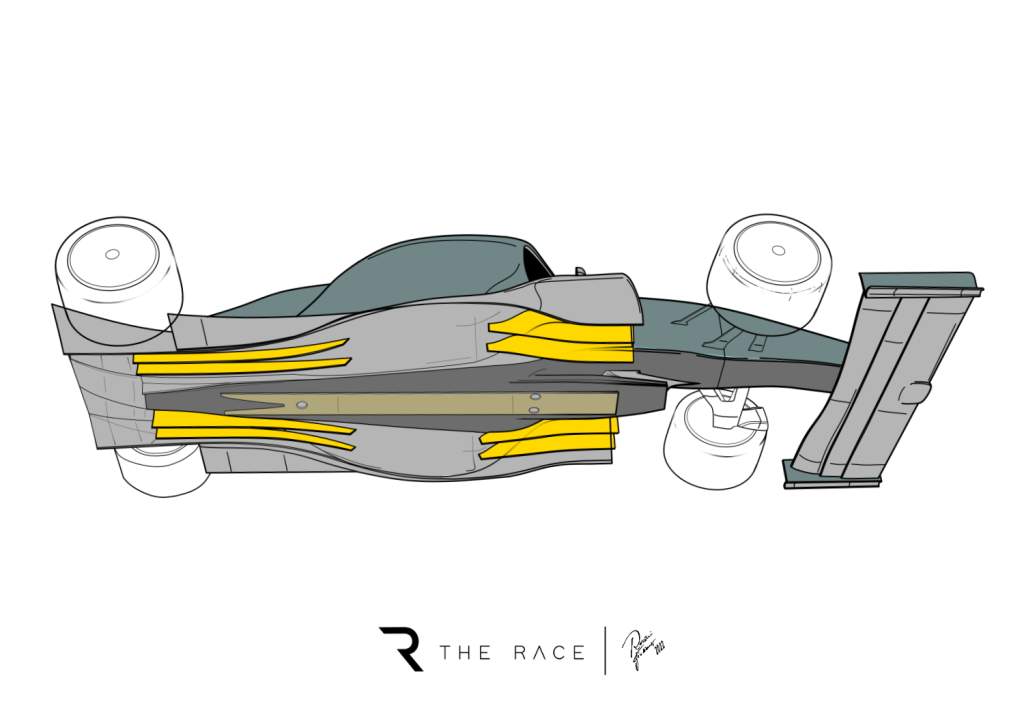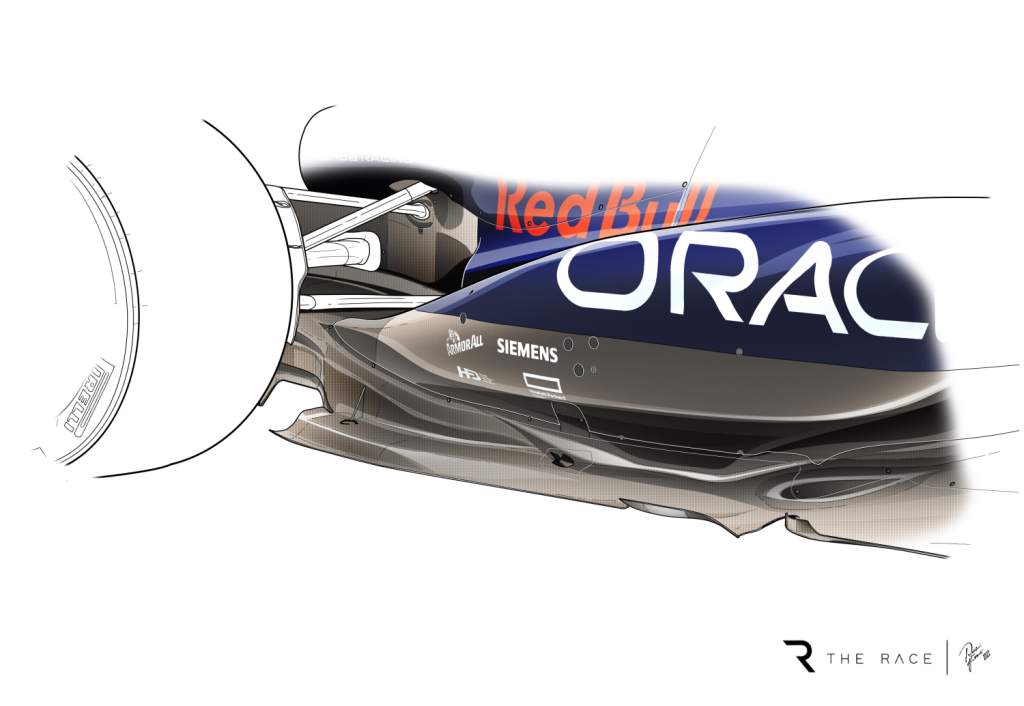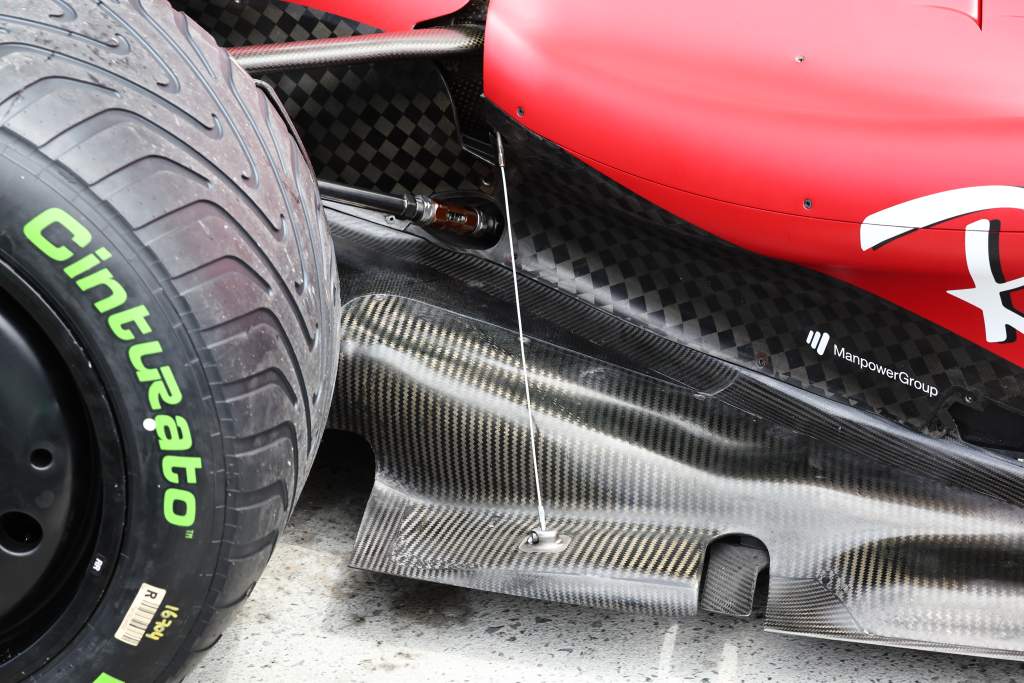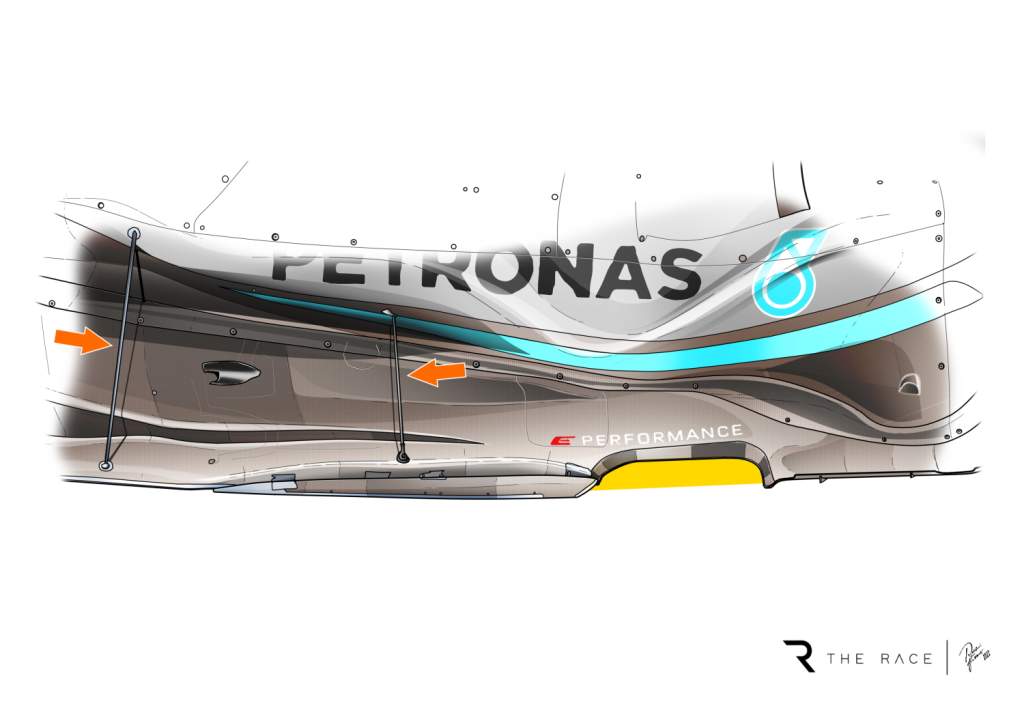Up Next

The Baku F1 weekend had completed the transformation of porpoising into a topic of not just a purely technical nature, but one concerning driver safety.
And last time out in Montreal the FIA decided to take concrete action to try to limit the aerodynamic phenomenon impacting ground effect cars.
The technical directive TD39/22 issued and made official on June 17 – albeit not applied in Canada – is a sign that the FIA wants to expedite the process, having – like everyone – seen Lewis Hamilton’s difficulties in getting out of the cockpit of his W13 in Baku and heard the widespread team radio complaints.
As not all teams suffer from this problem in the same way and with the same intensity, unanimous approval for an in-season change would’ve been a tough ask – but a change on safety grounds does not require this.
TD39/22 SUMMARY
It must be said that the press release issued by the FIA to announce the directive is not a regulatory change, but only a series of preventive countermeasures in the study of the porpoising phenomenon.
Firstly, the FIA wanted to intervene in Canada by scrutinising the wear and degradation of the floor and the plank, the area of minimum height of the cars with respect to the asphalt.

The second action was to have the teams carry out three consecutive laps with the DRS closed at racing speed, monitoring each car’s oscillation through sensors. What the technical department of the FIA is seeking is to define the maximum values of oscillation in which the various single-seaters can fall, in order to avoid reaching critical values that could damage the health of the drivers.
Before entering the parc ferme regime (i.e. at the end of FP3) the teams must present the values recorded by the accelerometers in the three laps in question and not fall foul of the limit.
Everything is still being defined, and during this week the FIA has called a meeting with the team principals to work out a solution on three fronts of the regulations: technical, sporting, and financial.
The sporting and technical aspects are fairly self-evident, but the financial side is that any change of rules will negatively affect teams already struggling to adhere to the budget cap, especially those that will be forced into major changes.
WHICH TEAM STANDS TO LOSE PERFORMANCE?
It is clear that the teams that suffer less from this problem will have less difficulty in respecting any limits that are to be introduced at Silverstone. It is also true that cars which continue to suffer from porpoising will have difficulty not only in staying with within the parametres on those tracks with uneven asphalt, but also in having to adapt by raising the single-seaters from the ground or stiffening the suspensions.
With single-seaters equipped with venturi channels, to try to obtain downforce you have to travel very low from the ground, to seal the flow as much as possible under the floor to obtain a sort of miniskirt.
Among those cars that suffer less from this problem, as is well-known, is the Red Bull RB18, which has never suffered from porpoising or bottoming. Alfa Romeo/Sauber also brought a car to the track that has not been impacted or proven unduly sensitive to set-up changes.
We have seen that Newey’s car does not even have much need to introduce reinforcements on the floor, and the Milton Keynes team is strictly focused on developing the RB18 and reducing weight.

Those who could have more difficulties include Aston Martin, Ferrari but above all Mercedes.
To counteract the phenomenon of hopping on some tracks with long straights and uneven asphalts, it is necessary to act on the set-up of the single-seater, changing springs, ride heights and stiffness. Mercedes has proven to be very sensitive to set-up changes on this front, having designed a W13 with a very narrow usage window.
The FIA for the Canadian GP had also granted the teams the possibility of introducing an additional support for the floor in order to have greater stiffness of the carbon structure.

However, since the technical note was only issued Thursday morning in Canada, almost no team was ready to implement an additional stay on their car.
The only one to have brought this solution was Mercedes, which also introduced a large cut to counter porpoising.

Mercedes then decided not to use the new specification in qualifying and in the race, and also removed the additional tie rod to prevent any teams from filing any protests. It is likely that the new floor specification will be tested again at Silverstone, which should be a more conducive circuit for the W13 anyway.
If we imagine that we have a pyramid to represent the set-up window, Mercedes is able to express a certain potential only at the tip of the pyramid, in a very small set-up space. Ferrari, on the other hand, was born much better on this front, and even if it suffers much more from bottoming than Red Bull, the F1-75 manages to perform well even with greater ground clearance.


